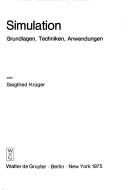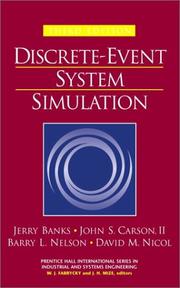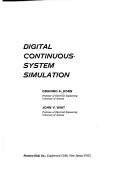| Listing 1 - 10 of 55 | << page >> |
Sort by
|
Book
ISBN: 354008357X Year: 1977 Publisher: Berlin Springer
Abstract | Keywords | Export | Availability | Bookmark
 Loading...
Loading...Choose an application
- Reference Manager
- EndNote
- RefWorks (Direct export to RefWorks)
Book
ISBN: 9026044232 Year: 1974 Publisher: Gent RUG. Seminarie voor productiviteitsstudie en -onderzoek
Abstract | Keywords | Export | Availability | Bookmark
 Loading...
Loading...Choose an application
- Reference Manager
- EndNote
- RefWorks (Direct export to RefWorks)
Dissertation
ISBN: 9789086495733 Year: 2012 Publisher: Leuven K.U.Leuven
Abstract | Keywords | Export | Availability | Bookmark
 Loading...
Loading...Choose an application
- Reference Manager
- EndNote
- RefWorks (Direct export to RefWorks)
In the broader field of Gamma-Ray Bursts (GRBs) the propagation of a decelerating relativistic blast wave presents great scientific interest from both theoretical and numerical point of view. The bright prompt phase with the characteristic variability in gamma-ray is followed by an extended afterglow emission which lasts for several days after the burst. It spans a great part of the spectrum from X-ray to radio frequencies and often displays a strong time variability which up-to-date has been difficult to explain. While the prompt phase is characterized by timescales in the order of seconds, the afterglow may last from hours up to several days after the prompt emission has ended. This quality makes afterglow light curves an ideal mechanism in order to study several aspects concerning the behavior of the GRB jet/ejecta. Strong optical and radio flares often appear in the afterglow phase of Gamma-Ray Bursts (GRBs). It has been proposed that colliding ultra relativistic shells, formed due to a variability in the central source, can produce these flares. During this PhD project we performed high resolution 1D and 2D numerical simulations of late collisions between two ultra-relativistic shells in order to explore these events. Our initial approach was to examine the case where a cold uniform shell collides with an external shell described by the Blandford and McKee self-similar approximation, in a constant density environment and consider cases with different Lorentz factor and energy for the uniform shell. We produced the corresponding on-axis light curves and emission images for the afterglow phase and examined the occurrence of optical and radio flares assuming a spherical explosion and a hard-edged jet scenario. The result of this simulation was a steeply rising flare like behavior for small jet opening angles and more gradual rebrightenings for large opening angles. Synchrotron self-absorption is found to strongly influence the onset and shape of the radio flare. Following this work we performed a 2D special relativistic hydrodynamical simulation of the deceleration of a finite angle GRB jet in a uniform medium. In contrast with previous work which handle relatively large opening angles, we examined the extreme case of a narrow 2 degrees half-opening angle ultra-relativistic jet. We examined the shock refreshment mechanism and presented the dynamical effects on the evolution of the jet that arise from the interaction of the two shells. This simulation revealed an angular dependency of the dynamical properties of the jet which enabled as to associate the collision time with the extraction of energy in the transverse direction at the position of the external shock. The final part of this research project consists of a 2D numerical simulation of a GRB jet propagating in the circumstellar bubble formed around a fastly rotating Wolf-Rayet (WR) star. For that we initially performed a 2D simulation of the evolution of the circumstellar medium around a massive star and used the product of that simulation as theinitial condition to initiate the jet simulation. To properly describe the latter one we performed 1D and 2D dynamical simulations and constructed optical and radio light curves for the 1D case while investigating the occurrence of rebrightenings in the afterglow resulting from the merging process of the two shells and the transition from the termination shock.
academic collection --- 519.876.5 <043> --- 524.8 <043> --- 524.8 <043> The Universe. Metagalaxy. Cosmology--Dissertaties --- The Universe. Metagalaxy. Cosmology--Dissertaties --- 519.876.5 <043> Numerical imitation of systems. Simulation--Dissertaties --- Numerical imitation of systems. Simulation--Dissertaties --- Theses

ISBN: 311004210X Year: 1975 Publisher: Berlin De Gruyter
Abstract | Keywords | Export | Availability | Bookmark
 Loading...
Loading...Choose an application
- Reference Manager
- EndNote
- RefWorks (Direct export to RefWorks)
Book
ISBN: 3540079602 0387079602 3642665012 Year: 1976 Publisher: Berlin Springer
Abstract | Keywords | Export | Availability | Bookmark
 Loading...
Loading...Choose an application
- Reference Manager
- EndNote
- RefWorks (Direct export to RefWorks)
Mathematical statistics --- 681.3*I61 --- 519.876.5 --- Simulation theory: model classification; continuous simulation; discrete simulation (Simulation and modeling) --- Numerical imitation of systems. Simulation --- Digital computer simulation. --- 519.876.5 Numerical imitation of systems. Simulation --- 681.3*I61 Simulation theory: model classification; continuous simulation; discrete simulation (Simulation and modeling)
Book
ISBN: 0471903809 0471903914 9780471903802 Year: 1984 Publisher: Chichester Wiley
Abstract | Keywords | Export | Availability | Bookmark
 Loading...
Loading...Choose an application
- Reference Manager
- EndNote
- RefWorks (Direct export to RefWorks)
Mathematical statistics --- Linear models (Statistics) --- Modèles linéaires (Statistique) --- 519.876.5 --- 57.087.1 --- Models, Linear (Statistics) --- Mathematical models --- Statistics --- Numerical imitation of systems. Simulation --- Biometry. Statistical study and treatment of biological data --- Linear models (Statistics). --- 57.087.1 Biometry. Statistical study and treatment of biological data --- 519.876.5 Numerical imitation of systems. Simulation --- Modèles linéaires (Statistique)

ISBN: 0130887021 Year: 2001 Publisher: Upper Saddle River Prentice Hall
Abstract | Keywords | Export | Availability | Bookmark
 Loading...
Loading...Choose an application
- Reference Manager
- EndNote
- RefWorks (Direct export to RefWorks)
Simulation methods. --- Simulation, Méthodes de --- 519.876.5 --- 519.8 --- Simulation methods --- Simulation techniques --- System simulation --- Operations research --- Systems engineering --- Models and modelmaking --- Numerical imitation of systems. Simulation --- Operational research --- Méthodes de simulation --- 519.8 Operational research --- 519.876.5 Numerical imitation of systems. Simulation --- Méthodes de simulation
Book
ISBN: 9014022670 Year: 1973 Publisher: Alphen aan den Rijn Samsom
Abstract | Keywords | Export | Availability | Bookmark
 Loading...
Loading...Choose an application
- Reference Manager
- EndNote
- RefWorks (Direct export to RefWorks)
519.876.5 --- 681.3*I6 --- 681.3*I62 --- Numerical imitation of systems. Simulation --- Simulation and modeling (Computing methodologies)--See also {681.3*G3} --- Simulation languages --- 681.3*I62 Simulation languages --- 681.3*I6 Simulation and modeling (Computing methodologies)--See also {681.3*G3} --- 519.876.5 Numerical imitation of systems. Simulation

ISBN: 013212274X Year: 1978 Publisher: Englewood Cliffs (N.J.): Prentice Hall
Abstract | Keywords | Export | Availability | Bookmark
 Loading...
Loading...Choose an application
- Reference Manager
- EndNote
- RefWorks (Direct export to RefWorks)
681.3*I61 --- 519.876.5 --- Digital computer simulation --- Digital simulation --- Computer simulation --- Simulation theory: model classification; continuous simulation; discrete simulation (Simulation and modeling) --- Numerical imitation of systems. Simulation --- Digital computer simulation. --- 519.876.5 Numerical imitation of systems. Simulation --- 681.3*I61 Simulation theory: model classification; continuous simulation; discrete simulation (Simulation and modeling)
Multi
ISBN: 9022006085 Year: 1977 Publisher: Wageningen Centre for agricultural publishing and documentation
Abstract | Keywords | Export | Availability | Bookmark
 Loading...
Loading...Choose an application
- Reference Manager
- EndNote
- RefWorks (Direct export to RefWorks)
631.44 --- 519.876.5 --- 631.47 --- 631.47 Surveying, classification and utilization of land. Soil profiles. Litter. Humus. Topsoil. Subsoil etc. Micropedology --- Surveying, classification and utilization of land. Soil profiles. Litter. Humus. Topsoil. Subsoil etc. Micropedology --- 519.876.5 Numerical imitation of systems. Simulation --- Numerical imitation of systems. Simulation --- 631.44 Classification of soils --- Classification of soils --- Soils --- Soil surveys.
| Listing 1 - 10 of 55 | << page >> |
Sort by
|

 Search
Search Feedback
Feedback About UniCat
About UniCat  Help
Help News
News